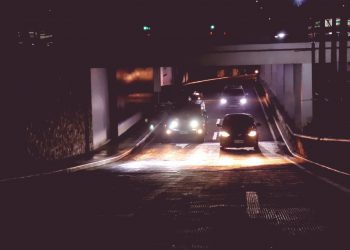Clean the headlights and taillights
The first step you need to do is clean the headlights, taillights and the indicators. To accomplish this well you need the following items: toothpaste, a rag, and water. Squeeze some toothpaste onto the cloth and proceed to scrub the headlights, taillights, and indicators. You can either use a circular motion or a back to forth motion. Once you have scrubbed the dirt off, you need to rinse the headlights, taillights, and indicators with water.
After rinsing, you should see the headlights, taillights, and indicators are clean and visible.
Clean your windshield and back window
You need a rag and a windshield cleaning solution. Start by spraying the cleaner on the windshield. Scrub lightly with the rag to remove dirt. Rinse with water to ensure the cleaning agent is gone. Wipe to dry. You need to always ensure that your windshield wiper fluid tank is always full with clean liquid.
After you have finished with the windshield, you need to clean the back window as well. This will provide visibility of drivers behind you.
Tweak the aim of your headlights
Headlights light the way during the night providing proper visibility to the driver. It is therefore important to have the lights properly aimed. This will enable the driver to see better at night and be able to spot obstructions early.
Turn your lights at medium beam at night
When driving at night, it is important to ensure that your lights are set at the medium beam. Setting the headlight full will reduce visibility for other oncoming drivers and may lead to an accident.
You need to also avoid flashing other drivers with full headlights signifying they lower their beam. This might lead also to an accident. While driving behind another driver at night, do not use high beam. You need to set them at medium mode so as not to distract the driver in front of you.
Have your car serviced
You need to have your car checked for any problems. Areas that need to be checked include the braking system, electrical system, wiper blades, spare tire and other areas. Having this done early will remove any problems that might lead you not to be in control of your car leading to an accident.
Have reflective triangles in your car
The reflective triangles are very important, especially during the night. In case of a problem with your car, you need to set one reflective triangle few feet ahead of your car and also set the other a few feet behind your car. This will warn other oncoming drivers. You can also carry a flashlight and a handheld car fire extinguisher just in case.

